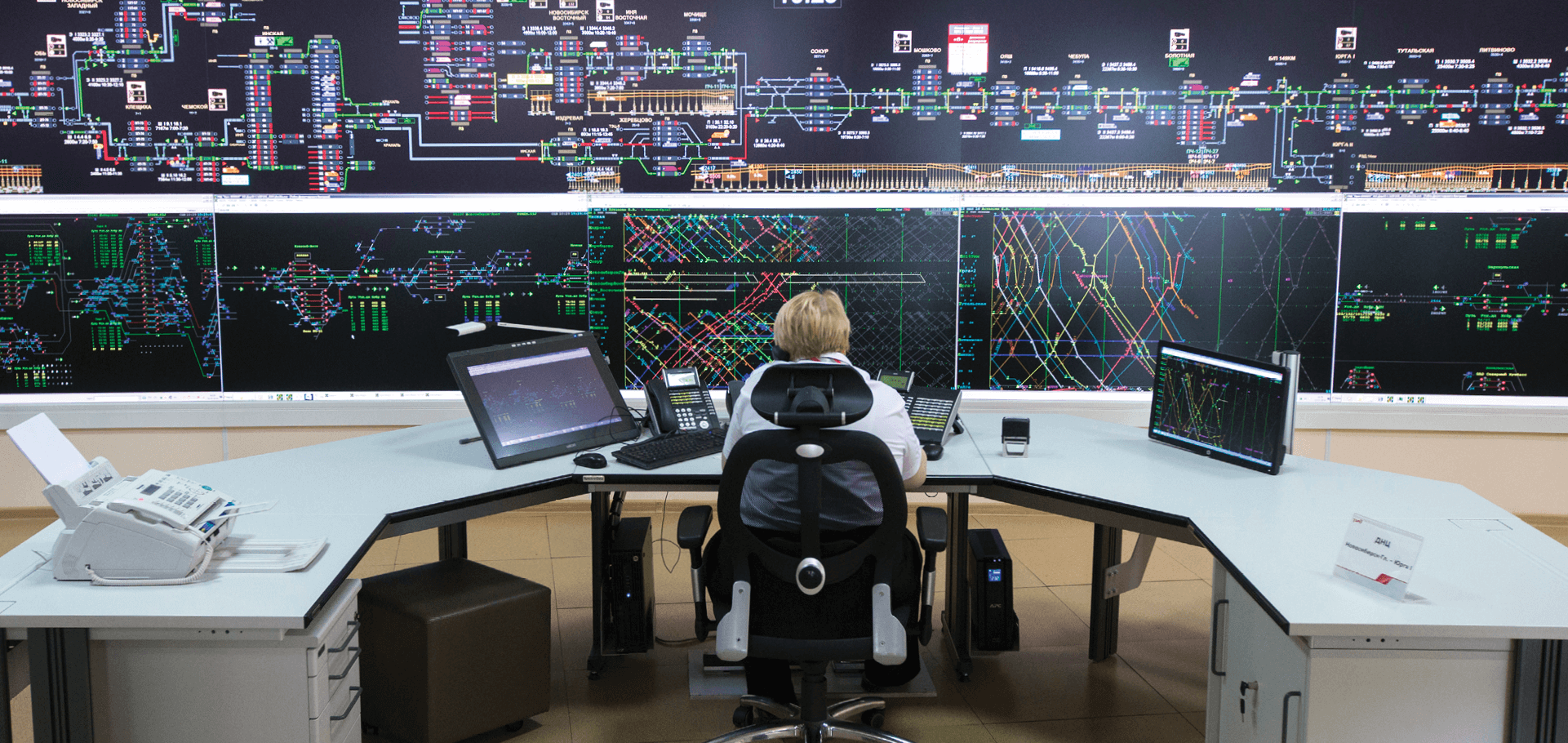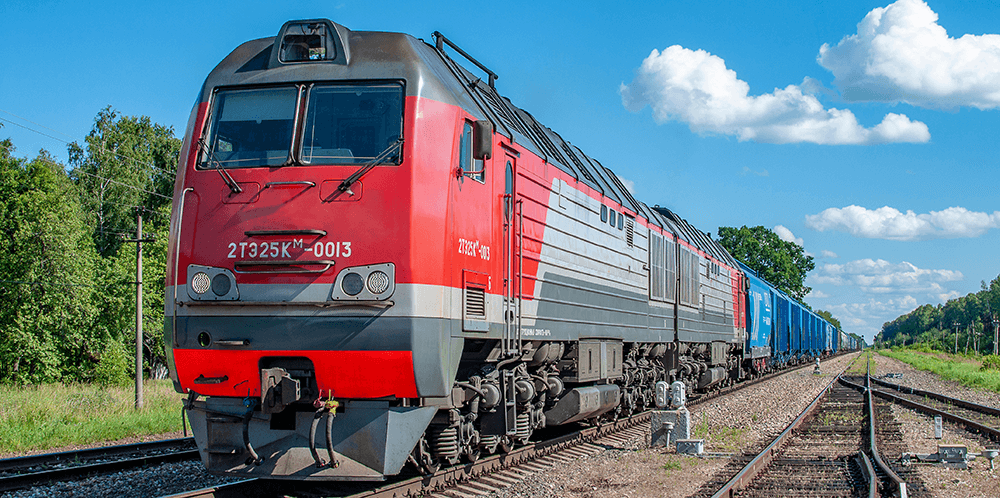Innovations and efficiency improvement
Innovation-driven development
Russian Railways’ R&D activities and innovation-driven development follow the priorities set forth in the Company’s Long-Term Development Programme until 2025, as well as the Group’s Research and Development Strategy until 2025 and further until 2030 (the White Paper)Approved by Russian Railways’ Order No. 769/r dated 17 April 2018., in line with the country’s strategic development goals and global R&D trends.
Key areas of the Group’s innovation-driven development:
- developing a customer-focused transportation and logistics system in a unified transportation space;
- establishing and implementing dynamic transportation management systems using artificial intelligence;
- implementing innovative systems to automate and mechanise station processes;
- setting requirements for the construction and deployment of innovative rolling stock;
- developing and implementing advanced equipment and technologies for track maintenance infrastructure, railway automation and telematics, electrification and power supply, innovative information and telecommunication technologies;
- developing the traffic safety management system and risk management methods associated with the transportation safety and reliability;
- developing and implementing equipment and technologies for promoting high-speed and ultra high-speed railway transport;
- promoting technologies for heavy-duty freight traffic management;
- improving energy efficiency of operations;
- implementing the best available technologies in environmental protection;
- promoting the quality control system.
The Comprehensive Innovative Development Programme (CIDP) until 2025Approved by the Company’s Board of Directors (Minutes No. 13 dated 26 February 2020). is the key tool for unlocking the innovation potential of the Long-Term Development Programme. It includes 11 groups of projects and proposals for streamlining innovation activities and establishes partnership mechanisms underpinned by open innovation principles.

Quantum communications
The Russian Government assigned Russian Railways responsibility for the development of the hi-tech Quantum Communications sector as part of the Digital Economy of the Russian Federation national programme. Advances in this area will help achieve two important objectiv:
- create integrated secure infrastructure for digital economy;
- contribute to Russia’s R&D growth strategy.
In November 2022, the Praesidium of the Government CommissionThe Government Commission on Digital Development, Use of Information Technologies to Improve the Quality of Life and the Conditions for Doing Business (Minutes No. 48 dated 9 November 2022). approved a roadmap for developing the hi-tech Quantum Communications sector through 2030. The roadmap sets out three key objectives to help Russia achieve a leading position in quantum communications:
- creating an infrastructure for quantum communications networks;
- developing quantum communications technology;
- building a relevant ecosystem.
We created the Monitoring and Control Centre for Russian Railways Quantum Networks responsible for managing the main quantum network and monitoring its metrics and overall performance.
As part of the roadmap, 25 R&D projects are underway to localise the production of equipment and components in Russia and develop up-and-coming technologies. Seven of these projects focus on the manufacturing of optical components that are of critical importance for the industry.
The quantum communications ecosystem brings together over 100 organisations ranging from government agencies to startups. Systems integrators, potential consumers, service developers and communications service providers are gradually joining the ranks of existing R&D and educational organisations, hardware and software developers and manufacturers.
Russian Railways and Digital Transformation Centre developed two professional standards in the realm of quantum communications. One of them has already been approved by Russia’s Ministry of Labour and Social Protection, while the other one is pending approval scheduled for 2023.

Support for innovation projects
One of the Group’s objectives is to become a hub for innovations and bring innovative momentum to the Russian economy. To this end, the Company builds partnerships with R&D institutions, industrial players, SMEs, and other national innovation champions.
The Company’s infrastructure for promoting innovations seeks to integrate the development of human capital with the use of tools facilitating engagement with external players. These tools include:
- one-stop shop for innovations;
- open queries;
- corporate acceleration programme;
- regional innovation platforms;
- innovation support programme and partnership agreements.
In 2022, the Company held four competitions scouting for innovation projects that could advance the R&D and innovation-driven growth of the railway sector and manufacturing of innovative products. As part of the competitions, we selected 15 promising innovation projects.
Russian Railways expands the list of tools available for innovation-driven upgrades of railway infrastructure. For example, in December 2022, the Company held the first PRO//Motion. Innovations conference aiming to enhance the partnership between scientists and the Russian business community, and to engage firms and private investors in joint innovation projects focusing on railway infrastructure.
In 2022 the Company also held the fourth acceleration programme titled “Passenger Transportation and Import Substitution”.
In November 2022 during the Transport of Russia International Forum and Exhibition the Company announced the launch of Russian Railways’ Transport Accelerator, which was joined by other players of the transportation industry. The initiative is designed to provide end-to-end solutions for industry-wide challenges, create a unified infrastructure platform, and promote new synergy-powered areas and products.
Protection of intellectual property
Legal protection and management of intellectual property rights is an important focus area for Russian Railways.
Russian Railways’ intellectual property portfolio includes 4,343 inventions, useful models, trademarks and software suites.
In 2022, the Company added 388 intellectual property items to its portfolio, including 9 items benefiting from legal protection abroad. According to the Federal Service for Intellectual Property (Rospatent), Russian Railways made it to the Top 3 companies with the largest number of state registration certificates for software inventions.
Information security risks
Managing information security risks is an essential priority. Breach of data confidentiality, integrity, availability, reliability, etc., may, among other things, lead to:
- disruptions of corporate systems thereby impacting operations and critical IT infrastructure facilities;
- disclosure of information constituting a trade secret or other types of secret;
- damages to the integrity of financial documents;
- unauthorised access to the personal data of employees and customers;
- direct and indirect financial losses.
The main risk factors related to the security of Russian Railways’ information infrastructure include tampering by third parties to gain unauthorised access to the information of the Company and its counterparties, including purposeful hacker and virus attacks, as well as internal threats of employee misconduct and analysis and SIEM tools failure.
The key information security measures implemented by Russian Railways include:
- classification and categorisation of Russian Railways’ systems, information security threat modelling, development of information protection requirements;
- sound arrangement of the information infrastructure components with due account for information security;
- design and implementation of centralised protection tools and private information protection subsystems in the Company’s information infrastructure, certification of Russian Railways’ systems for compliance with information security requirements;
- arrangements to analyse and control the security of IT infrastructure;
- organisation of employee training in information protection;
- ensuring the security of Russian Railways’ information systems in use, monitoring information security incidents and responding to them;
- conducting internal investigations into information security and confidentiality incidents related to the use of computers;
- enhancement of the Company’s information security policies and guidelines.
Risk management initiatives in 2022 included:
- developing Russian Railways’ information security management system;
- taking steps to analyse and control security levels, including source code analysis;
- ensuring compliance with information security requirements when developing and running Russian Railways’ systems.

Efficiency improvement
Improving the efficiency of infrastructure
In 2022 Russian Railways consistently eliminated railway infrastructure bottlenecks by constructing second tracks, extending station tracks, developing railway hubs and stations, developing marshalling yards, and upgrading railway tracks, while also ensuring conformity of railway facilities with regulatory standards and steadiness of the transportation process. A significant portion of investments in 2022 went to railway infrastructure upgrades designed to underpin safe and uninterrupted operations, to establishing a domestic production base, and unlocking the country’s industrial potential.
Higher traction stock efficiency
Heavy-duty traffic and higher weight standards of freight trains are key to optimising the transportation process in terms of increasing the carrying capacity, enhancing performance of locomotives and locomotive crews and reducing energy consumption for train traction.
Innovative locomotive fleet management systems
Process digitalisation and implementation of initiatives included in the Digital Transformation Strategy of Russian Railways are one of the key tools helping the Company to deliver on its Long-Term Development Programme.
In 2022 progress was made against the following process improvement projects.
- Remote locomotive driving. The diesel locomotive is driven from outside the cab by using a portable remote control unit. The technology makes it possible to engage a single employee to manage all shunting operations at a depot. The remote driving equipment is operated in the field test mode, with comments and suggestions collected for the purpose of its further fine-tuning (among other things, there were proposals to increase the time slot for automated operation, provide an option for battery replacement, light up control keys, display locomotive speed on the remote control unit, etc.). In 2022 the manufacturer supplied five TEM31M shunting diesel locomotives equipped with remote driving systems.
- Virtual coupling technology. This technology is used to operate the hauled train’s locomotive in the automatic train operation mode by taking into account the train data transmitted by the hauling train’s locomotive via a radio channel. Virtual coupling is designed to increase the throughput capacity by reducing intervals between trains.
